Key Takeaways
- Freight reliability: Over 70 % of palletised freight in Australia is hauled by Curtainsider trucks, valued for side-loading speed and operational flexibility.
- New trucks: Expect to invest $180,000–$350,000, contingent on size, capacity, and body configuration.
- Used options: Begin at around $40,000, with pricing rising based on age, mileage, condition, and equipment.
- Understand your full costs: Beyond the sticker price, factor in $40,000–$55,000 in annual fuel, $6,000–$12,000 in servicing, and $4,000–$8,000 in insurance to accurately calculate your curtainsider truck’s real five-to-seven-year investment.
- Match size to operations: Choosing the right GVM class and pallet capacity prevents overspending, avoids NHVR fines of up to $15,000, and ensures your curtainsider truck delivers maximum efficiency and compliance.
Introduction
Curtainsider trucks are the backbone of palletised freight in Australia, transporting more than 70 % of such goods across urban and regional networks thanks to their side-curtain design which facilitates rapid loading and unloading. They’re ubiquitous across industries, from agriculture and manufacturing to logistics hubs and retail distribution. This guide equips fleet buyers and operators with detailed pricing insight, strategic buying tips, and clarity to make great decisions.
Market Overview & Price Dynamics
- Top choice for versatile freight: Curtainsider trucks are favoured for their adaptability, efficient access, and capability to handle a variety of cargo types across tight delivery schedules.
- What drives pricing:
- Size and pallet capacity (e.g., small urban rig vs high-volume unit)
- Chassis configuration and tare weight
- Powertrain sophistication (e.g., manual vs automated transmissions)
- Additional features such as tail-lifts, protective lining, and accessibility aids
- Compliance with Australian regulations and body build quality
Understanding these variables helps you align specs with cost, and ensures you pay for what matters to your operations.
Price Breakdown: New vs Used
New Curtainsider Trucks
- Typical sticker: $180,000–$350,000, depending on truck dimensions, build, and special features.
- Examples from national listings:
- Lower-tier new units around $108,000 inc. GST
- Mid-tier close to $230,000–$284,000 inc. GST
Used Curtainsider Trucks
- Prices start around $20,000–$40,000 for older, high-kilometer units
- Mid-range offerings appear between $50,000–$90,000, generally with moderate mileage and reasonable condition
- Some relatively recent used units, offering better condition or lower kilometers, list close to $150,000–$160,000
Key Factors That Impact Price
- Dimension & Capacity: Larger, higher-payload builds cost more to produce and purchase.
- Powertrain & Technology: Vehicles with advanced transmissions (e.g., AMTs) or higher output engines are typically priced at a premium.
- Kilometres & Condition: Less-kilometre vehicles and those with documented service history retain higher value.
- Auxiliary Equipment: Add-ons like tail-lifts, reinforced curtains, or enhanced safety features will influence final pricing.
- Regulatory Compliance: Trucks built in compliance with ADRs and GVM categories may carry extra cost, but also mitigate working-law risks.
Buying Strategy: How to Maximise Value
- Obtain multiple quotes: Approach at least three suppliers to gauge fair pricing for comparable configurations.
- Clarify pricing details: Confirm whether figures are fully drive-away (GST, fees included) or exclude government and on-road charges.
- Define your freight profile: Determine what pallet capacity, body dimensions, and features you truly need, this avoids overspending.
- Inspect used vehicles thoroughly: Look at service logs, examine structural wear (suspension, curtains, chassis), and verify kilometres.
- Negotiate smartly: New units may allow negotiation on inclusions or financing; used trucks often have more price flexibility based on condition.
Compliance, Financing & Operating Costs
- Financing options: Many providers offer leasing, hire-purchase, or chattel mortgage schemes to spread costs.
- Regulatory fit: Make sure chosen vehicles comply with ADR and state GVM standards, noncompliant trucks risk penalties or route restrictions.
- Running costs to account for:
- Fuel usage varies significantly with engine type and weight.
- Specialist components (like AMTs) may reduce wear but increase parts costs.
- Factor in insurance, routine maintenance, downtime, and parts availability when calculating total cost of ownership.
Total cost of ownership (TCO) analysis
When budgeting for a curtainsider truck in Australia, the purchase price is only part of the equation. Understanding the total cost of ownership (TCO) helps you avoid underestimating long-term expenses and select a truck that fits your financial model.
Upfront costs to factor in
- Truck purchase price, New curtainsider trucks in Australia typically start from $130,000 for light-duty models and exceed $260,000 for heavy-duty vehicles.
- Body fit-out and customisation, Curtainsiders often require added features like gates, mezzanine floors, or load restraint systems, which can add $8,000–$25,000 depending on complexity.
- Stamp duty & registration, Varies by state but generally adds 3–5% to the purchase price.
Ongoing operational costs
- Fuel usage, A heavy-duty curtainsider consumes 25–35L per 100km, translating to around $40,000–$55,000 annually based on average freight distances.
- Servicing & maintenance, Expect around $6,000–$12,000 per year for scheduled servicing, tyres, and brake replacements.
- Insurance premiums, Depending on vehicle size, payload, and usage, insurance averages $4,000–$8,000 annually.
Why TCO matters for ROI
Choosing a cheaper truck upfront can backfire if servicing costs, fuel consumption, and insurance premiums are significantly higher over time. A well-planned TCO analysis ensures you select the best-performing truck for your five-to-seven-year operational horizon and maximises resale value.
Payload, pallet capacity & weight class matching
Getting payload and pallet capacity right is critical when choosing a curtainsider truck, both for cost efficiency and compliance with Australian regulations.
Why payload affects pricing
- Light-duty curtainsiders (up to 4.5t GVM), Ideal for metro deliveries, usually $130,000–$160,000 new.
- Medium-duty (4.5t–8t GVM), Suitable for regional freight, averaging $150,000–$200,000.
- Heavy-duty (8t+ GVM), Built for interstate and high-volume runs, costing $200,000–$280,000+.
Pallet capacity guide
- 10–12 pallet bodies, Common for metro and regional operators.
- 14–16 pallets, Best for bulk freight movers requiring high-capacity trucks.
- 20+ pallets, Heavy-duty curtainsiders typically servicing long-haul operations.
Compliance considerations
Australian operators must comply with NHVR mass and dimension laws when selecting a curtainsider. Overloading can lead to fines exceeding $15,000 and increased wear on brakes, tyres, and suspension, ultimately inflating your TCO.
Frequently Asked Questions (FAQs)
Q: What’s the real price gap between new and used?
New units typically cost $180,000–$350,000, while used options start at $40,000 and can climb to $150,000–$160,000 depending on condition and specs.
Q: Are used trucks worth the risk?
Absolutely, used trucks can offer 40–60 % cost savings. Just prioritize well-documented units with reasonable kilometres and inspect thoroughly.
Q: What makes two similarly spec’d units vary in price so much?
Mileage, service history, body condition, added amenities, and compliance with development standards all contribute. Lesser-known builds may also trade cheaper.
Q: Should I go for a lower-end new unit or invest in a premium spec?
If you need higher throughput or long-range efficiency, a premium spec, though more costly upfront, often yields operational ROI. For local or lighter duties, basic builds may suffice.
Q: How do I ensure apples-to-apples comparisons across quotes?
Request fully inclusive (drive-away) quotes. This clarifies the true purchase cost, including taxes and delivery-related fees.
Q: Does geography affect pricing within Australia?
Yes, urban areas often carry higher demand and dealer margins, while regional deliveries may add transport costs. Always mention your location when seeking quotes.
Q: What else should I factor into long-term cost calculations?
Consider fuel economy, insurance, parts/service network presence, and any feature-related maintenance premiums (e.g., automatic systems).
Final Thoughts
Navigating the Australian curtainsider truck market can be complex, especially with rising fuel prices, evolving NHVR compliance requirements, and increasing pressure to optimise fleet efficiency. This guide focuses on the key cost drivers and operational considerations that matter most, giving you the clarity to make better, data-driven decisions.
Whether you’re comparing new vs used curtainsider trucks, evaluating total cost of ownership over five to seven years, or matching payload capacity to your operational demand, understanding these factors upfront can save your business tens of thousands of dollars annually. By aligning the right vehicle choice with your budget, compliance needs, and growth plans, you’re positioned to maximise return on investment while avoiding costly mistakes.
If you’re ready to explore options tailored to your business, now is the ideal time to compare multiple supplier quotes and secure the most competitive pricing on the market. The right insight, backed by real numbers, make all the difference in achieving long-term fleet efficiency and profitability.



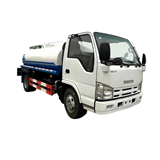


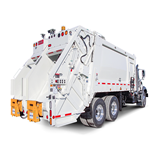
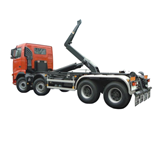


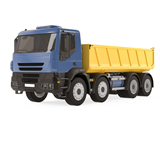


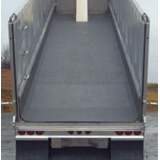
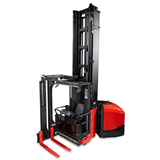
-160x160-state_article-rel-cat.png)
-160x160-state_article-rel-cat.png)
